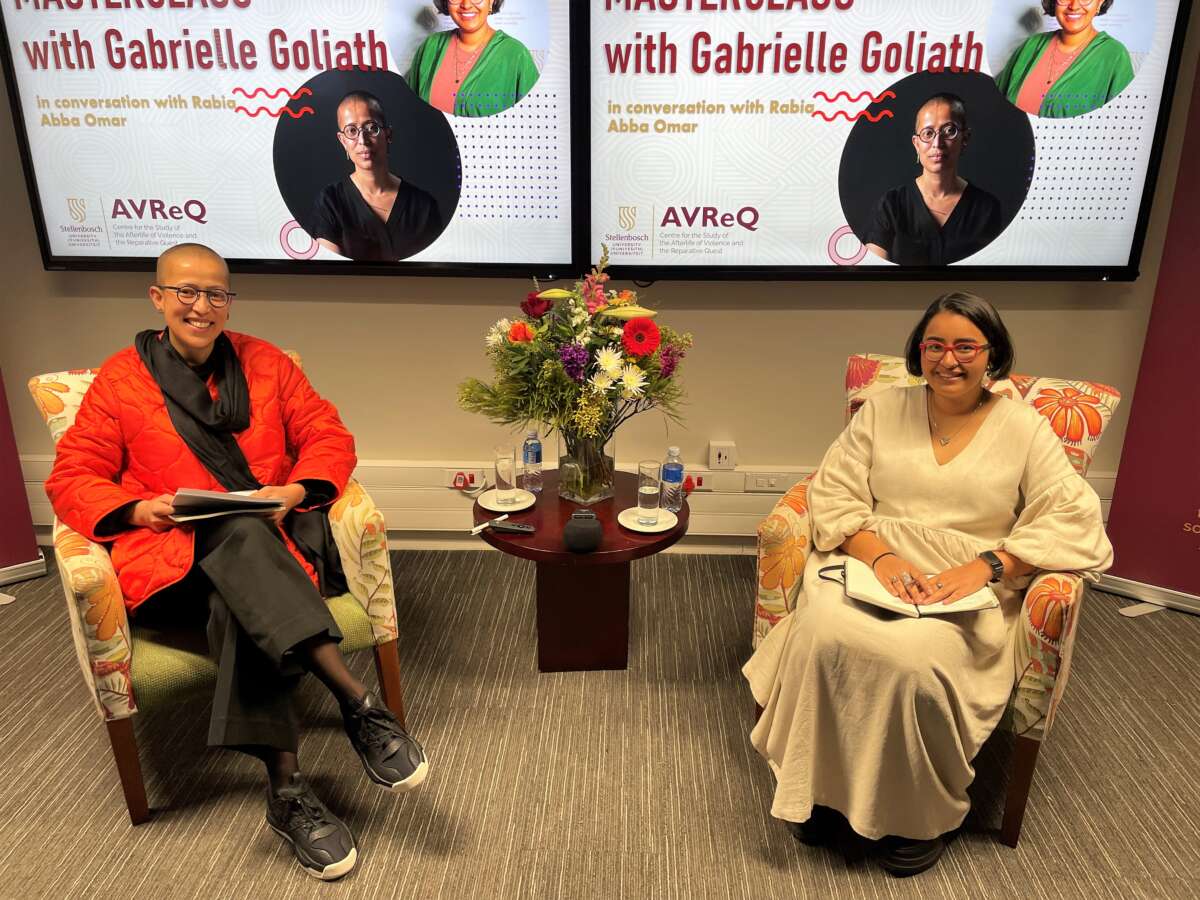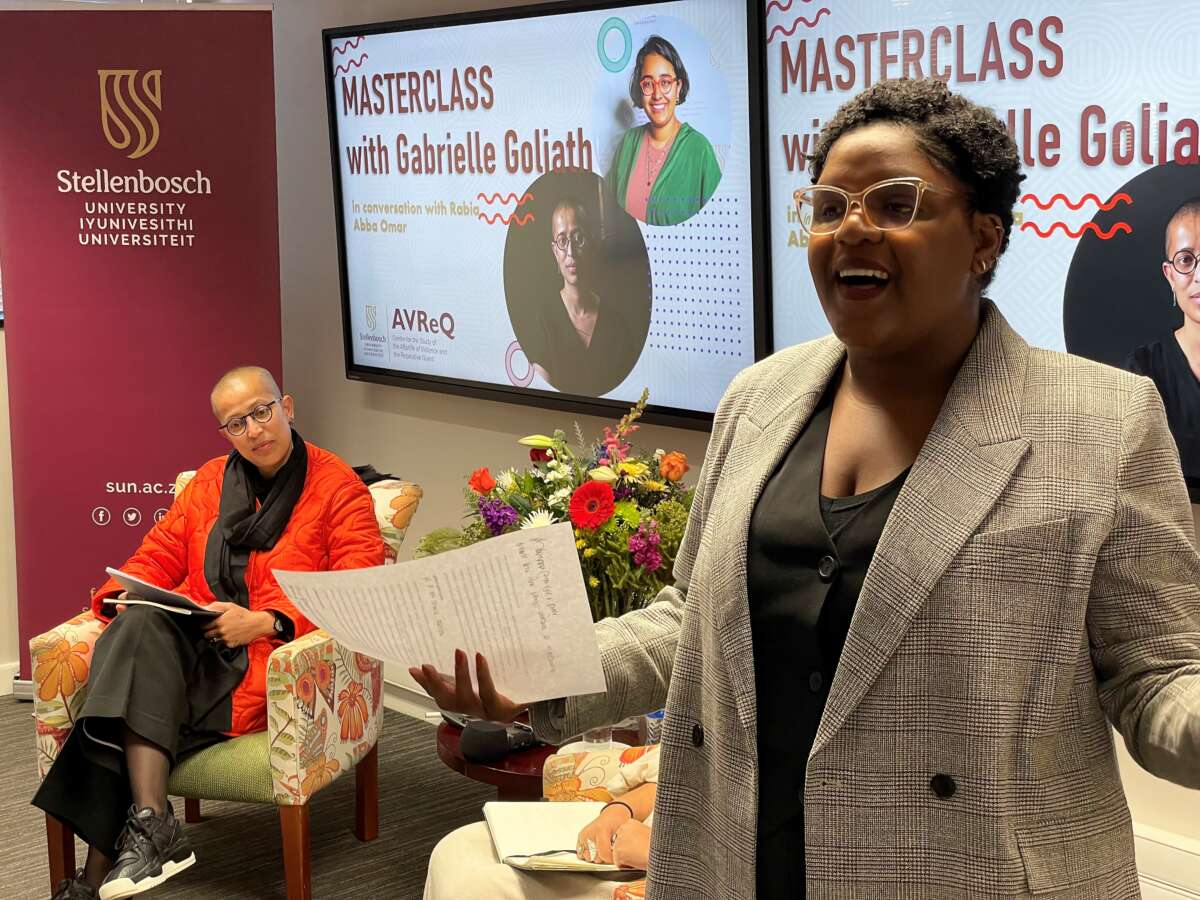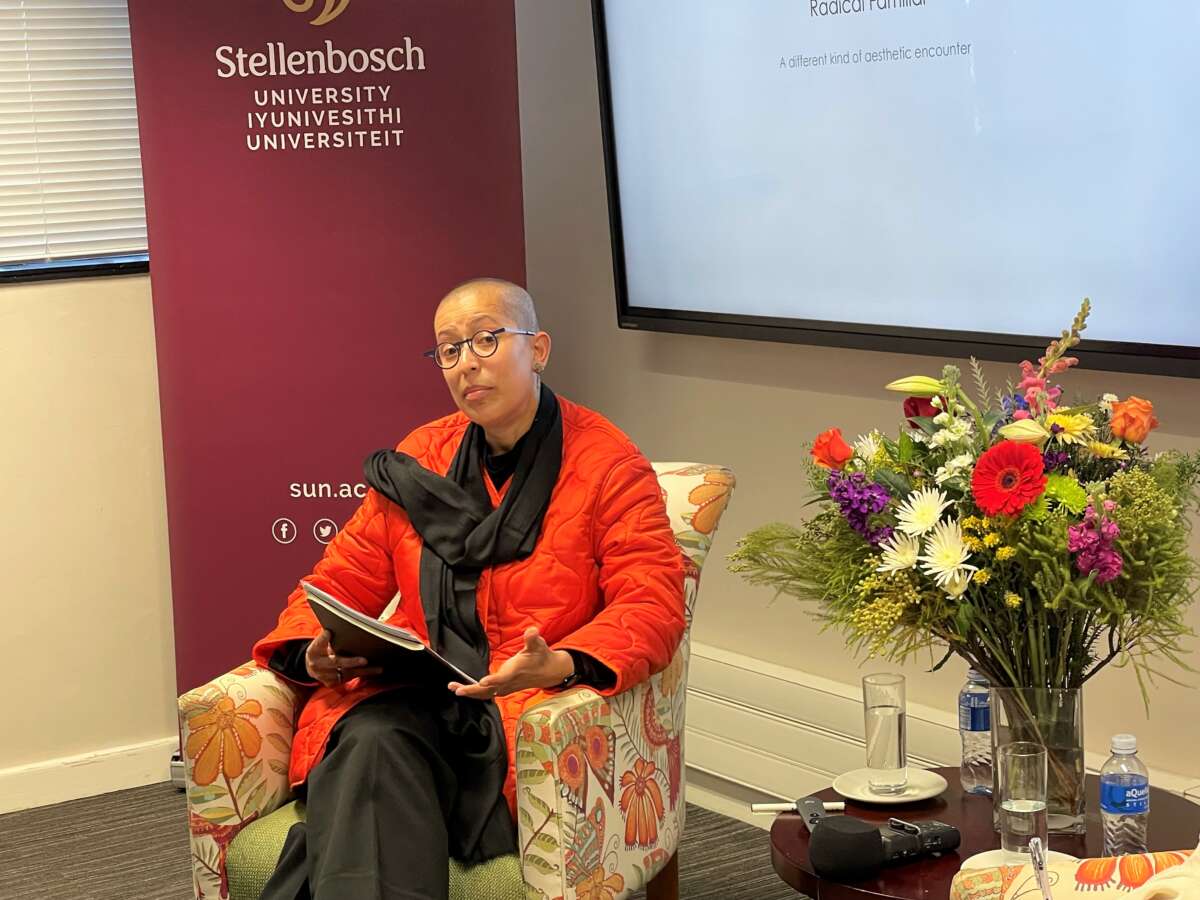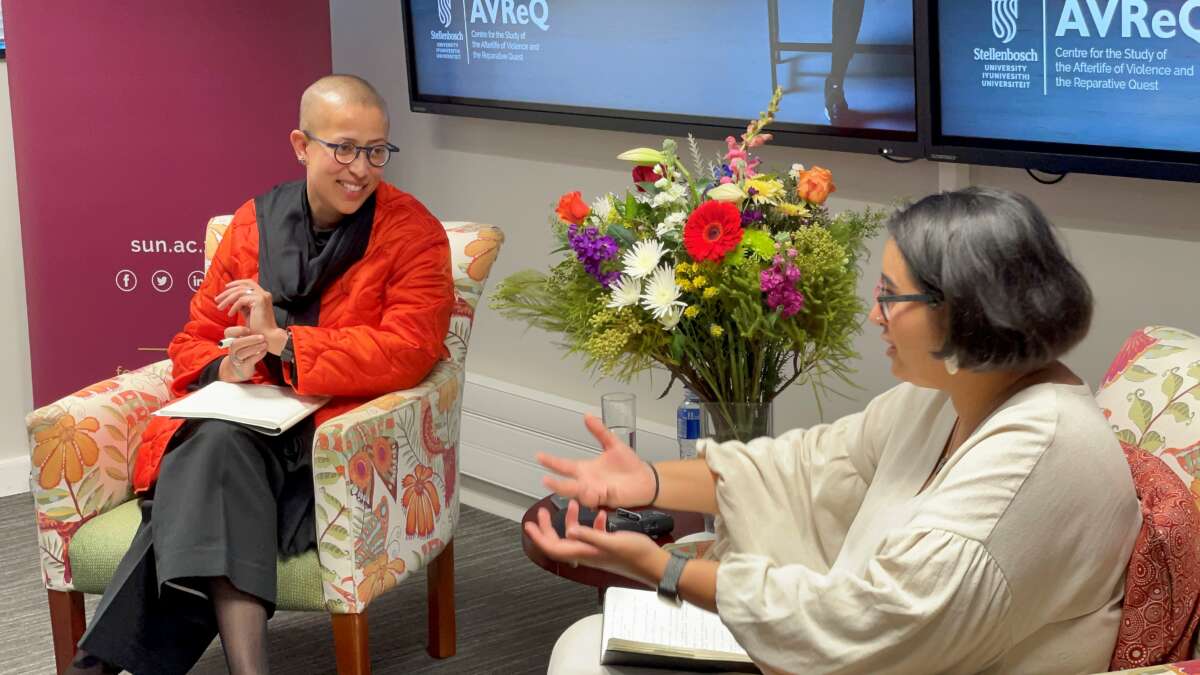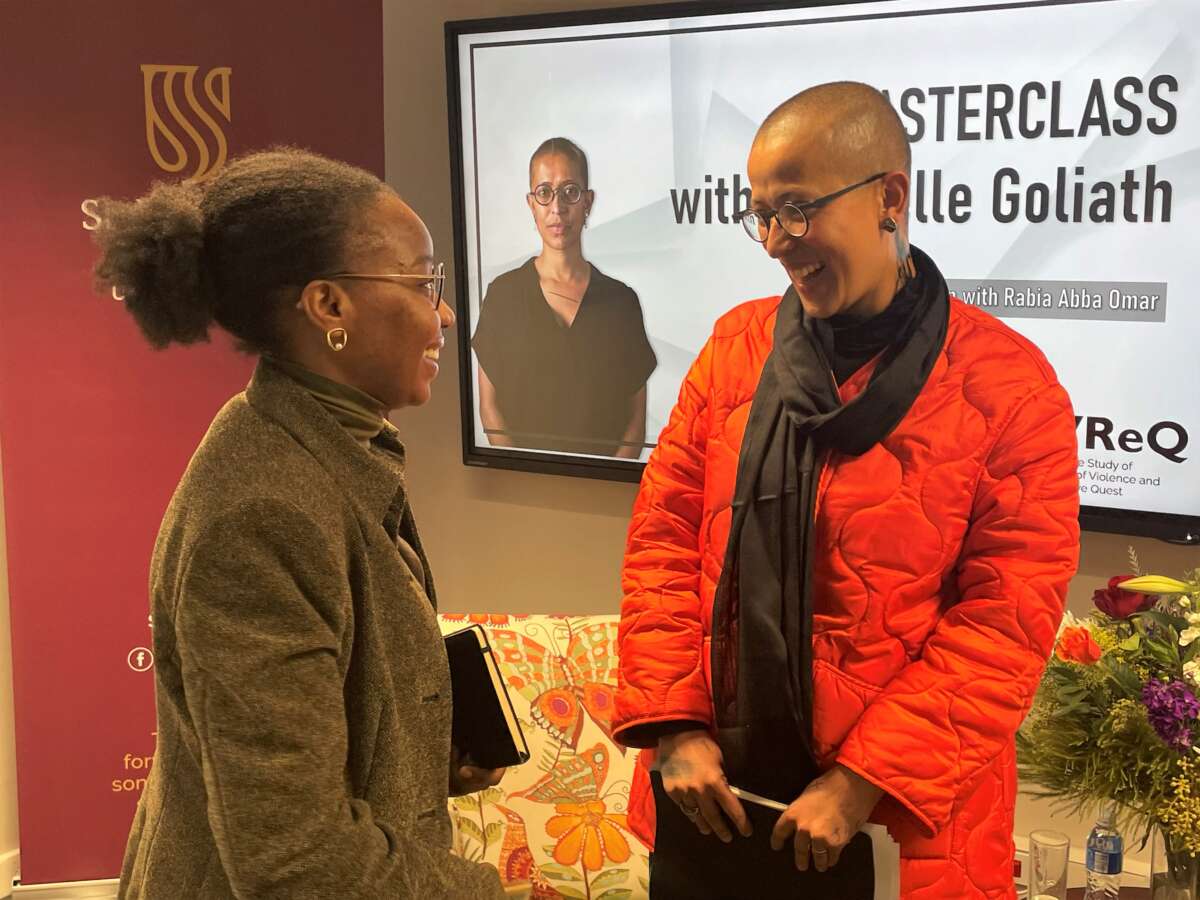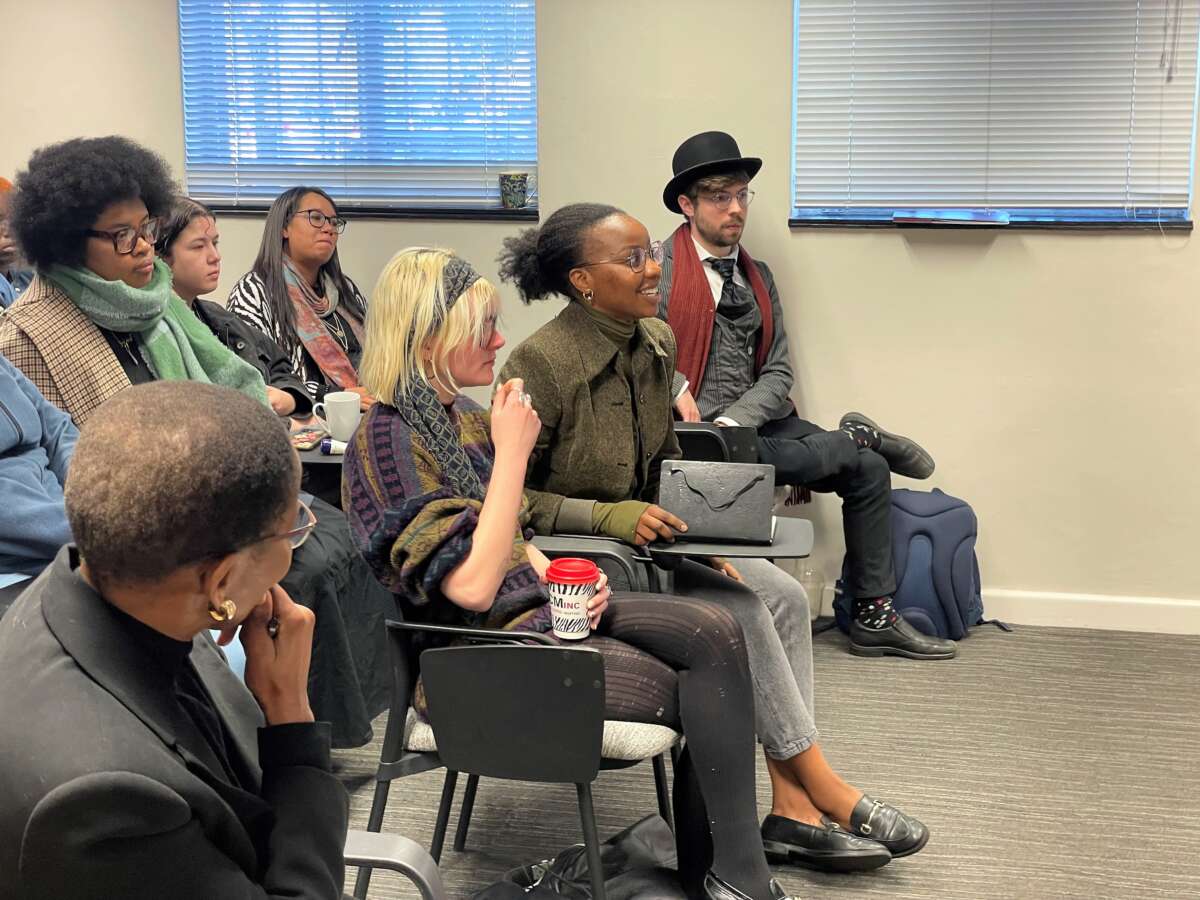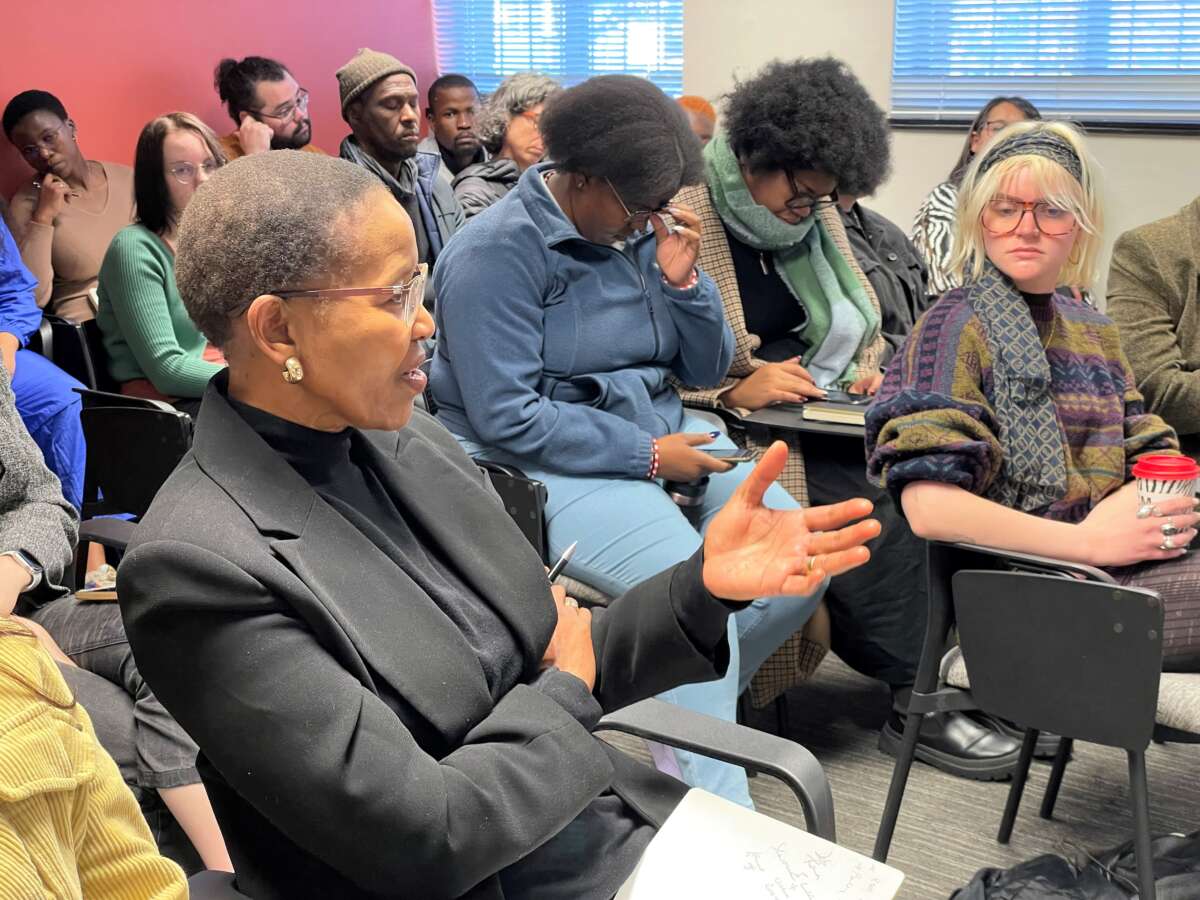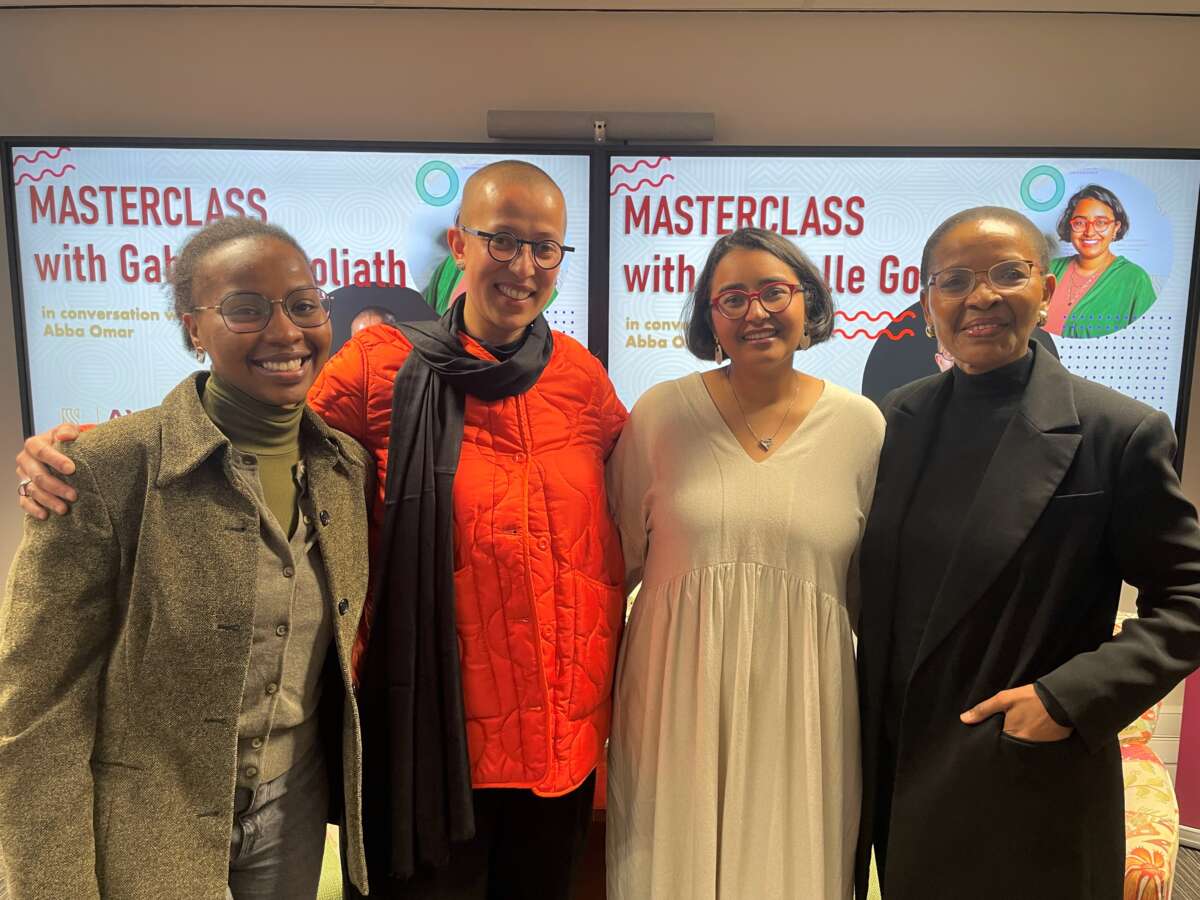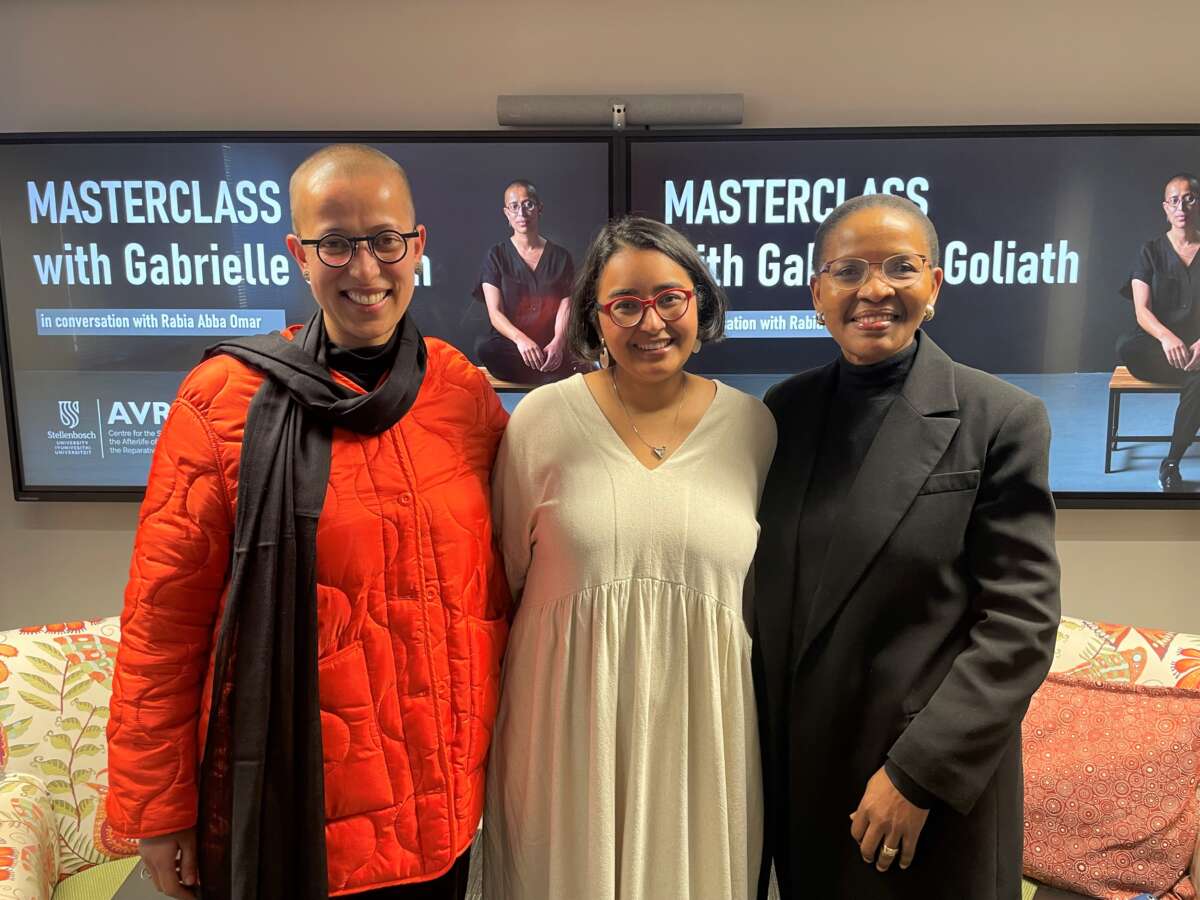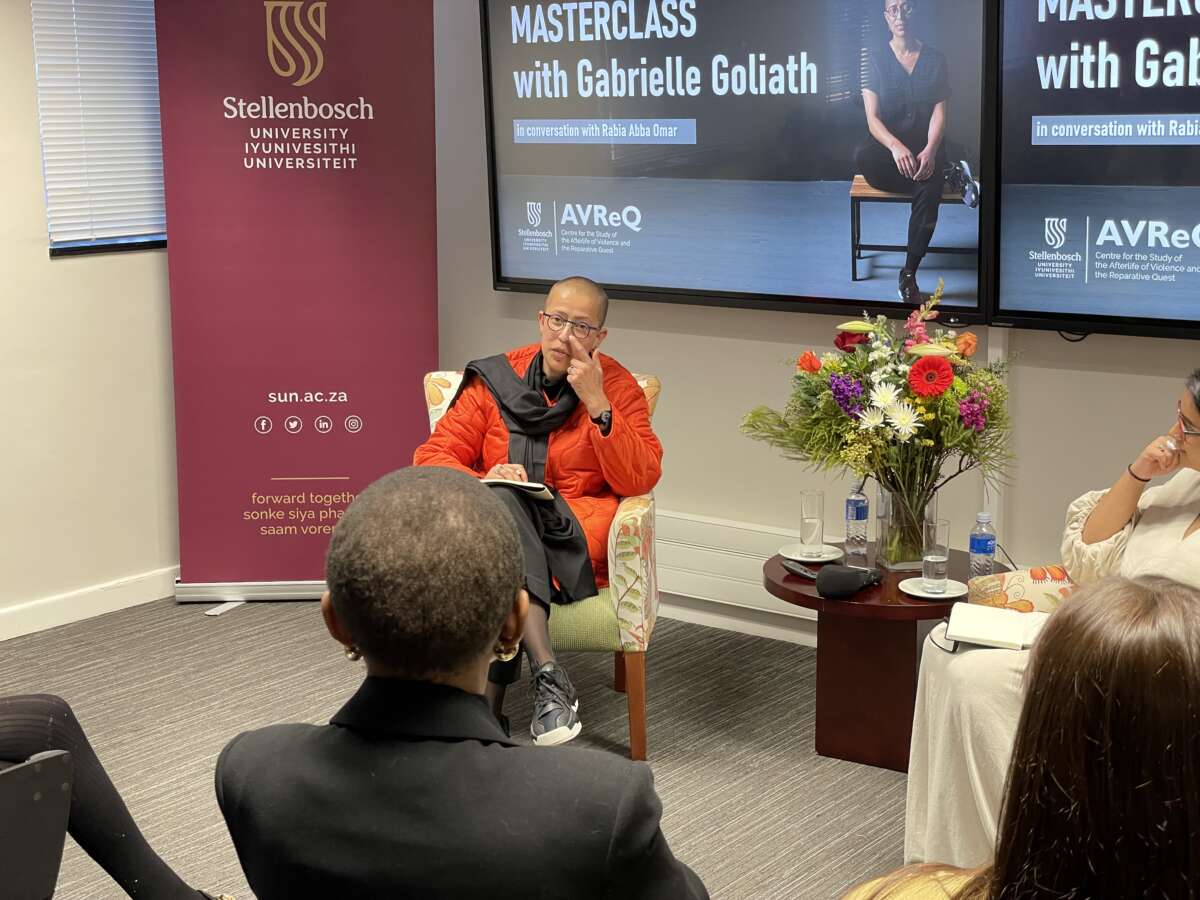In this instalment of the masterclass, Rabia Abba Omar was in conversation with Gabrielle Goliath as she shared on “Radical Familiar. A different kind of aesthetic encounter.” This discussion of the AVReQ Masterclass stirred a profound contemplation on the intricate threads of representation, encounter, and response. Gabrielle directed her focus towards the realm of radical familiarity, black decolonial feminist repair, and the nuanced histories of black femme bodies. Through a tapestry of insights, the discourse offered a panorama of illumination, revealing pivotal junctures.
Gabrielle embarked on a journey of reimagining aesthetic encounters, punctuating the inadequacy of conventional modes of perception. Her clarion call to move beyond the superficial realms of observation into a deeper terrain of engagement challenges the very essence of how we interact with art and each other. Central to the discussion was the concept of radical familiarity. This radical shift from the ordinary to the extraordinary, rooted in black decolonial feminist principles, sought to navigate the intricate labyrinth of histories marked by varying degrees of valuation and devaluation. Goliath provocatively posited that familiarity isn’t merely a given, but a deliberate effort to bridge differences. The implications of interrelation were tangible in Goliath’s discourse. She unveiled the intricate tapestry of shared experiences and emotions, often untangleable from their intricate interplay. Here, Goliath dissected the impossibility of complete empathy, positioning the resultant pain as a catalyst for collective response and political demand.
Through her poignant project, “Elegy,” Gabrielle painted a canvas of collective witnessing. This immersive installation, akin to a portal, beckoned participants to traverse a space of decolonial feminist encounter, invoking bearing and transformative familiarity. A response to the crisis of normative representation and racial sexual violence, the project’s commemorative performances stood as powerful challenges to the very grammar of violence that too often subjugates. Her engagement with colonial visual economies unfurled a chilling history of objectification, reflecting on the colonial gaze and the disturbing culture of lynching peeled back the layers of normalized racialized violence, laying bare the origins of entrenched stereotypes.
In navigating the risky terrain of representation, Goliath unveiled the strategies employed by black women artists to subvert imposed narratives. Her emphasis on a contingent ethical and political framework of black decolonial feminist care underscored the delicate balance these artists tread in their work. Moreover, Gabrielle’s proposition of a radical aesthetics of possibility opened an outlook beyond the confines of the traditional. It envisioned an immersive encounter that goes beyond the universal and embraces the transformative power of radical difference and bearing.
